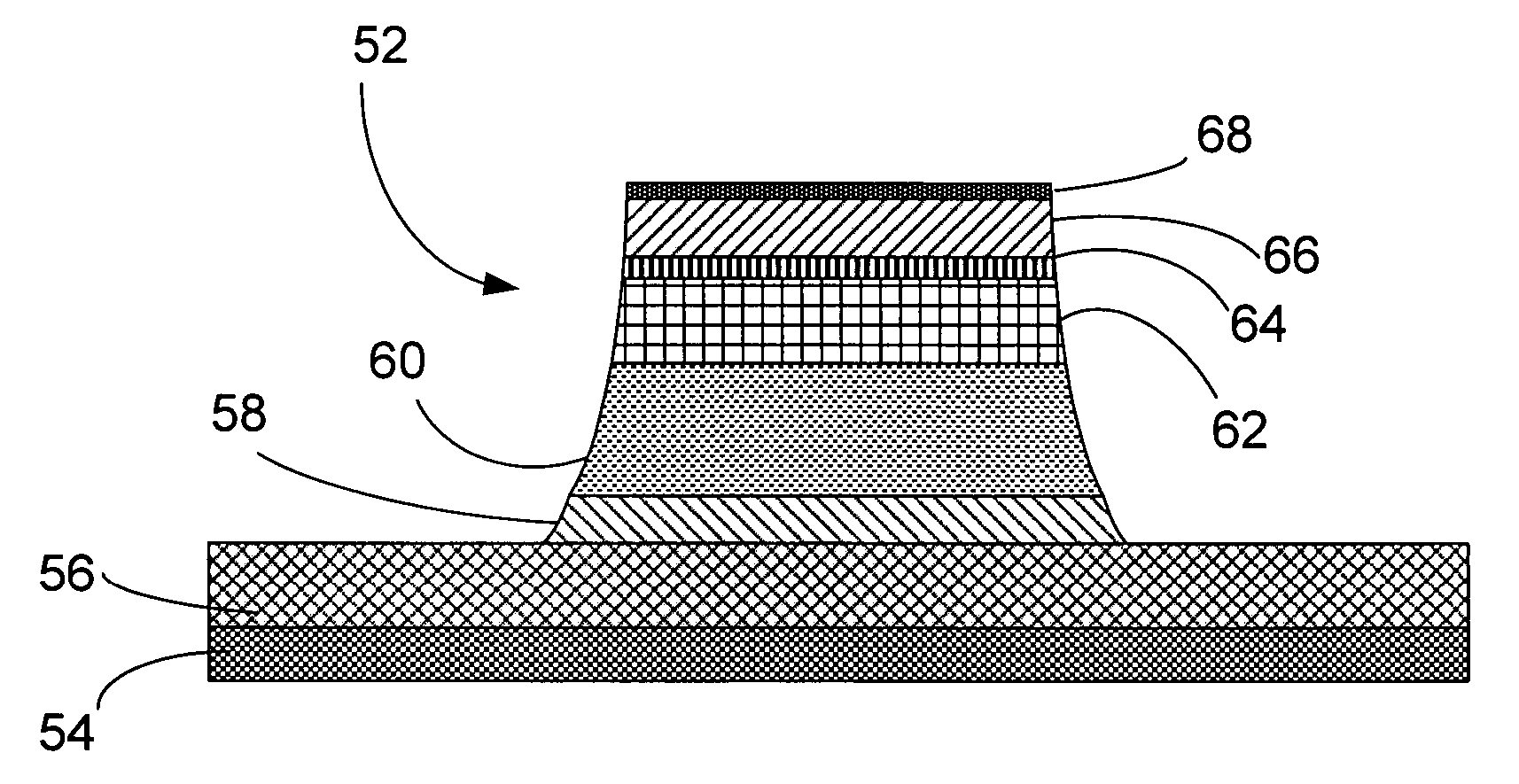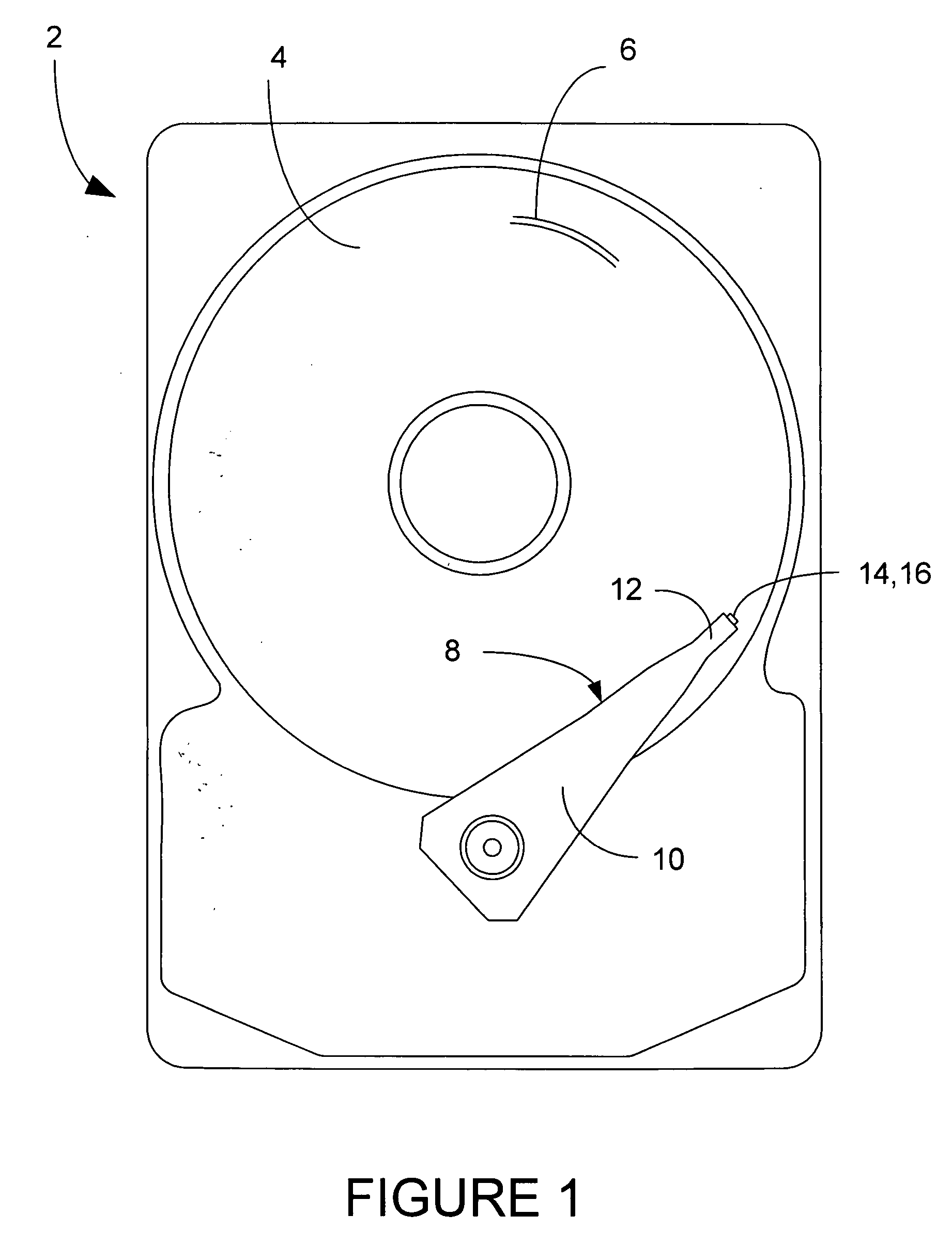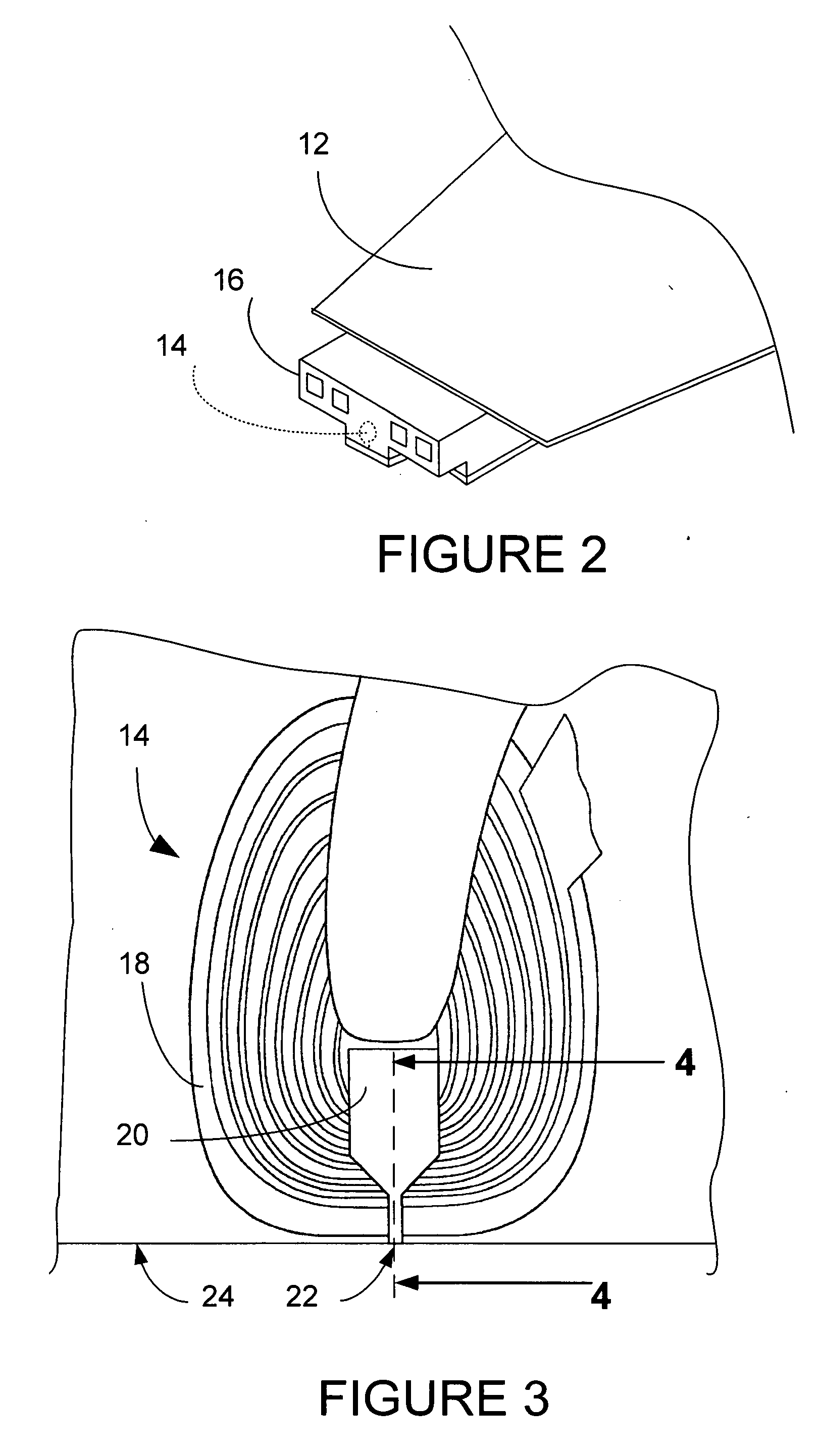Method of fabrication for read head having shaped read sensor-biasing layer junctions using partial milling
a technology of reading head and layer junction, which is applied in the field of fabrication of electronic components, can solve the problems of /b> becoming too small to support the upper layer, affecting device performance, and the limit of this technique, so as to achieve less material removal, improve manufacturing yield, and reduce yield loss
- Summary
- Abstract
- Description
- Claims
- Application Information
AI Technical Summary
Benefits of technology
Problems solved by technology
Method used
Image
Examples
Embodiment Construction
[0033] The present invention is a disk drive read head having partial milling of the sensor layers above the dielectric layer, and a method for producing this read head.
[0034] A hard disk drive 2 is shown generally in FIG. 1, having one or more magnetic data storage disks 4, with data tracks 6 which are written and read by a data read / write device 8. The data read / write device 8 includes an actuator arm 10, and a suspension 12 which supports one or more magnetic heads 14 included in one or more sliders 16.
[0035]FIG. 2 shows a slider 16 in more detail being supported by suspension 12. The magnetic head 14 is shown in dashed lines, and in more detail in FIGS. 3 and 4. The magnetic head 14 includes a coil 18 and P1 pole, which also acts as S2 shield, thus making P1 / S220. P1 S2 may also be made as two discrete layers. The second pole P222 is separated from P1 / S2 by write gap 23.
[0036] The read sensor 50 is sandwiched between the first shield S130 and the second shield P1 / S220. There ...
PUM
| Property | Measurement | Unit |
|---|---|---|
| incidence angle | aaaaa | aaaaa |
| width | aaaaa | aaaaa |
| angle | aaaaa | aaaaa |
Abstract
Description
Claims
Application Information
 Login to View More
Login to View More - R&D
- Intellectual Property
- Life Sciences
- Materials
- Tech Scout
- Unparalleled Data Quality
- Higher Quality Content
- 60% Fewer Hallucinations
Browse by: Latest US Patents, China's latest patents, Technical Efficacy Thesaurus, Application Domain, Technology Topic, Popular Technical Reports.
© 2025 PatSnap. All rights reserved.Legal|Privacy policy|Modern Slavery Act Transparency Statement|Sitemap|About US| Contact US: help@patsnap.com



